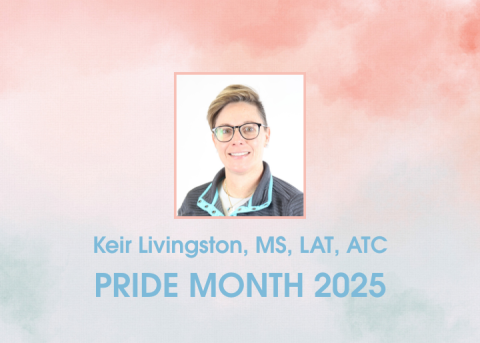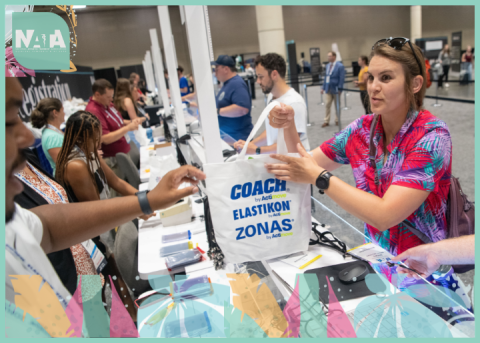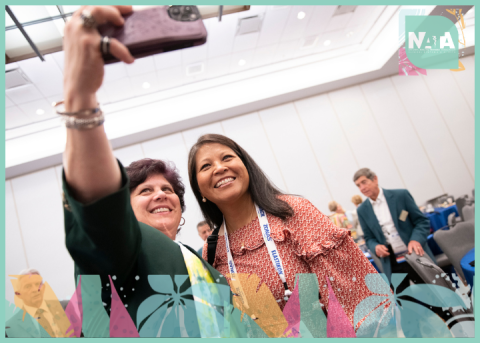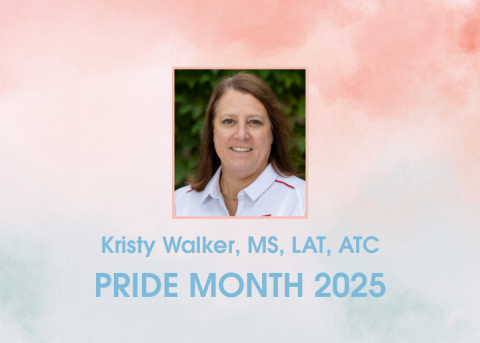
By Cari Wood, ATC, NATA Title IX Task Force Chair
In 2022, NATA is celebrating the 50th anniversary of Title IX, which went into effect June 23, 1972. Starting during Women’s History Month in March and leading up to the 73rd NATA Clinical Symposia & AT Expo in June, the NATA Now blog will highlight various legends of the profession and outline the impact Title IX had on them, their careers and the overall athletic training profession.
For Jackie Smaha, AT Ret., her route to athletic training as a profession is probably different from most. She was always athletic, but lacked any school sponsored sports in high school except tennis, so she turned to cheerleading. In the summers, she competed in AAU swimming and diving and hoped to continue into college.
These early athletic days influenced her throughout her career in athletic training and orthopedics, pushing her to advocate for her patients at every turn.
Pre Title IX
Sports were offered at Eastern Washington, where Smaha attended as an undergraduate from 1969-73 but lacked any significant support. With a keen interest in science and secondary physical education, she graduated with her bachelor’s degree, then decided to take some time off to ski in Sun Valley (Ketchum), Idaho, with a couple of college friends, when one winter turned into several.
While in Ketchum, Smaha was introduced to Dr. Fred Bailing, former team doctor for the San Francisco 49ers and Stanford University. With an interest in returning to graduate school in pre-med to work with athletes, Bailing had suggested athletic training as there were many programs popping up around the country and just a handful of women in the profession. Without spending seven more years and thousands of dollars, two more years of graduate school and being able to work with athletes sounded enticing, Smaha said.
Having a great relationship with her former departmental professors at Eastern, she was able to manage a graduate assistant position in the physical education department, working with then head athletic trainer Glen Bradwin. This was the right fit for Smaha, she said, and she was teaching intro to athletic training within two semesters there.
“I was amazed at how women’s athletics had changed at Eastern in the short time of three years,” she said. “The number of women’s sports supported there were still lacking, but the athletic training program was well-underway with Glen at the helm. The facility was new and much better than most, as the Seattle Seahawks trained there in the summers. We were definitely spoiled.”
Because the athletic training facility was closed to the Seahawks in the summer, she returned to Ketchum where she actually observed her first knee surgery and worked with the summer softball leagues.
The PE department tried to fund an instructor/assistant athletic trainer position for Smaha, but it wasn’t possible at the time because of budgetary constraints.
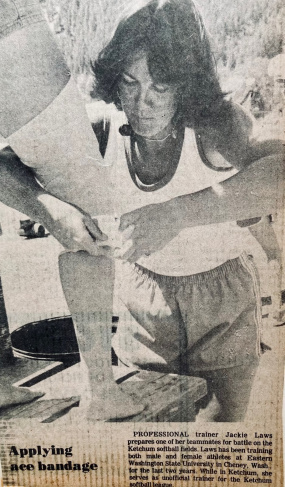
Differences in Interpretation and Compliance
1978: After grad school, Jackie interviewed and was offered a women’s AT position at the University of Idaho. Smaha said they seemed “archaic” compared to EWU in facilities and Title IX compliance for women athletic trainers. She said that during her interview she was asked if she would be willing to put up with a “small space,” which ended up being a large janitor closet in the PE building with room for one taping table, one mini whirlpool, one mini ice machine and a hydrocollator. No electrical modalities. The female athletes had to line up down the hallway for treatments since there wasn’t room in the AT “closet.” The other PE staff members complained because it was noisy before and after practices due to the athletes.
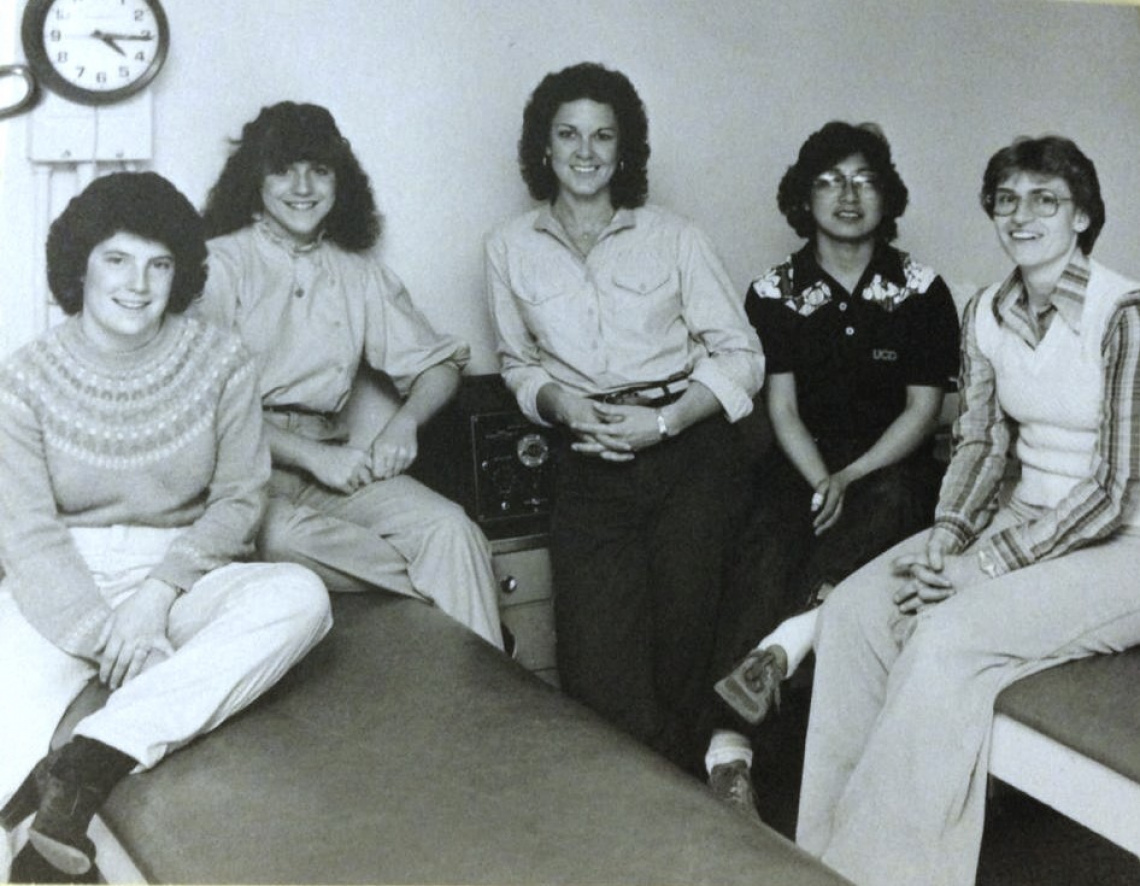
Fighting for Changes
Due to the small facility and other reasons, Smaha went to the athletic director and asked for a better facility and for her female students to have the opportunity to work with a contact sport, such as football, and other male sports for the benefit of seeing a variety of injuries. Because of her persistence, the U of I put up a curtain so women could go into the larger men’s athletic training facility through a locker room and her female students were eventually given time to help with the football team, although there was still some push-back. A couple years later, a larger facility was added on to the Kibbie Dome, which included a co-ed AT facility.
Smaha was promoted to the head women’s athletic trainer and stayed at U of I until 1984. She also married Mark Smaha in 1984, who was the NATA District Ten director at the time. Smaha went on to become a licensed PA surgical assistant in orthopedic surgery, where she worked for the team orthopedist, Richard Donati. Because of her love for teaching, she continued to be involved with athletic training by being a guest presenter in the athletic training classes at Washington State University and U of I.
“It was hard,” Smaha said about Title IX compliances. “It was difficult journey for me. But it evolved as did my course in the profession. I always loved taking what I’d learned in orthopedics back into the athletic training facility.”
It was there that Smaha had taken a special interest in foot and ankle biomechanics and orthotic therapy, which she continued to pursue at Wade Zinn Physical Therapy in Poulsbo, Washington, from 1992 until recent retirement in 2020.

